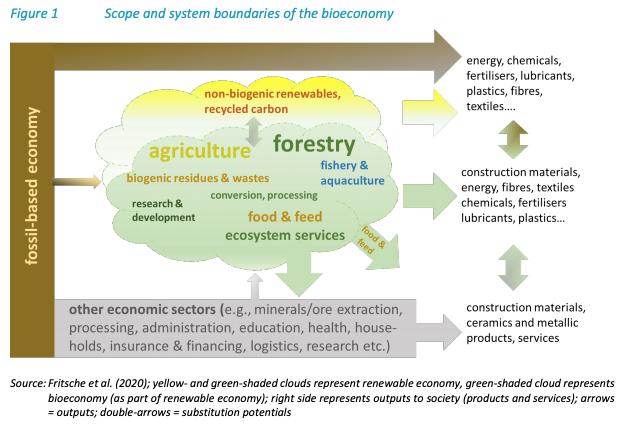Sustainability governance of bioenergy and the broader bioeconomy
Technical Paper prepared for IEA Bioenergy Task 45 and the Global Bioenergy Partnership (GBEP) Task Force on Sustainability
The bioeconomy – and bioenergy as part of that – provides key opportunities to achieving the Sustainable Development Goals (SDGs), and to contribute to a “green” recovery after the COVID-19 pandemic. For this, though, it is crucial to assuring sustainability governance of the bioeconomy, e.g., regarding access to land, conservation of biodiversity, mitigating climate change, providing employment, ensuring food security, and water availability.
This paper aims to provide an overview of the status and recent developments of bioenergy and bioeconomy governance for the Sustainability Task of the Global Bioenergy Partnership, IEA Bioenergy, and the interested public.
In particular, the objectives of this paper include:
- Provide an overview of the status of the bioenergy and bioeconomy particularly in terms of expected demand and respective impacts (Section 1).
- Define what governance is and summarize the status of bioenergy and bioeconomy governance (Section 2)
- Identify promising sustainability governance approaches for the bioeconomy (Section 3).
- Present perspectives on sustainability governance of the bioeconomy (Section 4)
Throughout this report, bioenergy is referred to as part of the broader bioeconomy, similar to food & feed, fisheries, forestry, and waste management being part of the bioeconomy.
Yet, bioenergy is dealt with specifically, as it has a prominent role in the energy system and is already subject to sustainability governance.
Key messages:
- The importance of bioenergy and bioeconomy governance is increasingly recognized and implemented on different levels, though without comprehensive cross-sectoral and transboundary coordination. Yet, the nature of connections between primary production (agriculture, forestry, etc.) and conversion (chemicals, construction, energy, fibre, food etc.) requires considering their interactions across sectors, and beyond national boundaries.
- Given the close interaction of agriculture, forestry, food and the materials and energy sectors it seems appropriate to consider all uses of biomass under the bioeconomy concept. Yet, as of today, there is no coherent or comprehensive governance framework for the bioeconomy.
- Bioeconomy governance is a complex field given the variety of actors, sectors, and interests interacting. There are different approaches to safeguard or enhance the sustainability of the bioeconomy. To assure that sustainability requirements are indeed fulfilled, such approaches should be accountable and based on principles such as assessment of risk, participation, and monitoring.
- There are various possibilities for companies to demonstrate compliance with sustainability criteria, or to minimize risk, through the supply chain of the company: certification schemes, verification, or Due Diligence (or a combination of them).
- There is increasing interest of many stakeholders to work collaboratively on improving sustainability governance of the bioeconomy. The possible extension of the GBEP Sustainability Indicators for Bioenergy to the broader bioeconomy may be a key opportunity to deliver on that ambition, and initiatives such as the Global Bioeconomy Summits could help exchanging views and supporting alignment between countries.



